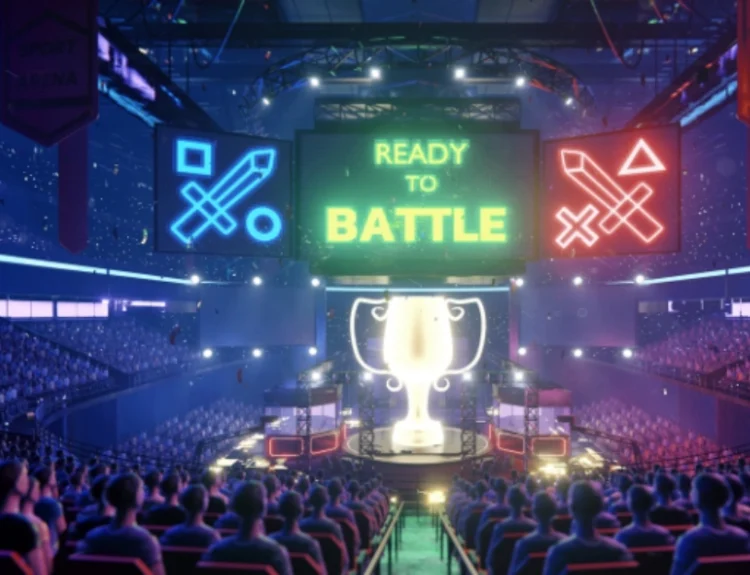In the last ten years, esports has been expanding from a niche hobby to one of the most rapidly developing branches of the world entertainment industry. Playing video games has now become a viable career choice, and stadiums are full of fans cheering their favorable teams, and millions of others are watching the games online. Streaming vs Competitive Play among the growing platforms for earning.
Advertisers, brands and investors have identified the potential of esports, and the industry is worth billions. On the one hand, they have competitive play, when talented people become a part of a team, play in a league, and take part in tournaments with great prizes. Conversely, streaming has found its profitable niche, and websites such as Twitch and YouTube offer streamers an opportunity to make money on their personalities and establish dedicated audiences.
This brings one of the key questions: in an industry where there are several sources of financial prosperity, which one of them might turn out to be more profitable in the long term than the other: competing on the highest level or being streamed by millions of viewers?
Understanding Competitive Esports
Competitive esports is a form of organized professional-level gaming, commonly in the form of leagues, teams, and tournaments. Players spend hundreds and hours mastering mechanics, strategy, and teamwork, which is sometimes taught by coaches and analysts. Contrary to casual gaming, the competitive market is one that is constructed on skill, discipline and consistency.
Popular Competitive Games and Tournaments
The fact that the most popular competitive games emphasize the landscape is enormous. The most popular games in the global circuit include League of Legends (LoL), Counter-Strike: Global Offensivewhich has just been developed into CS2, Valorant, and Dota 2.
These games each have an infrastructure of regional leagues, international tournaments and franchised teams which are similar to traditional sports organizations. Tournaments such as The International in Dota 2 or The League of Legends World Championship not only have tens of millions of viewers, but considerable prize pools in tens of millions, which is already an indication of the amount of money moving through this business.
Revenue Streams for Professional Players
In the case of a professional player, the income is a combination of different sources. The most evident are the winnings of the tournaments and the prize pools provide life-altering amounts to the winners. Salaries are the other significant influence, especially among those players who are contracted to a franchise in a given league, and the duration of the contract is one year, which makes them financially stable. Team sponsorships and brand agreements also contribute to their revenues, and usually include the endorsement of gaming equipment, energy drinks or clothing. Lastly, most of the players who compete professionally supplement their income by streaming their training sessions, which enables them to create a fan base at a level that is not yet competitive.
The Income Gap in Competitive Esports
In competitive play, income will be significantly different, however, based on skill level. Amateurs are not paid much, even when they are passionate and, in many cases, have to finance their involvement. The semi-professional players receive low stipends or small prize winnings but often have to make ends meet with a part-time job. The salary of professional players, especially in franchised leagues or in an existing organisation, is between $30,000 and $100,000 per year without bonuses and sponsorships.
At the very top, such legendary players as Faker of League of Legends or s1mple of CS: GO have made millions of dollars out of a mix of salaries, endorsements, and tournament wins. However, it should be remembered that these are rather isolated cases than normal. Careers in professional players are not long and they span over a few years because of the competition, physical and mental burnout. The rewards are great for those who are successful, but they are also the risks.
Understanding Streaming in Esports
We can say that streaming, on the other hand, is a more adaptable and personality-based method of earning in the esports industry. Social networks, like Twitch, YouTube, and Facebook Gaming, have changed the professional understanding of being a gamer. Streamers do not count on contracts with teams or the tournament wins, but the money is earned through the recording of their matches and the establishment of direct relationships with viewers.
Performance vs. Personality
The major distinction between streaming and competitive play is the emphasis. Competitive players focus on peak performance and teamwork, whereas streamers focus on engagement and entertainment. To be successful in streaming does not mean that one has to be the best at playing a game, but because he or she is the most entertaining. Such personal traits as charisma, humor and relatability are often more important than proficiency.
Revenue Streams for Streamers
Streamers also have a number of revenue sources, which can be more predictable than tournament-based sources of income. One of the surest sources of income is subscriptions, where fans are required to pay a monthly subscription to get exclusive privileges. Tips and donations, which are usually unplanned gestures of support by the viewers, may be added as high sums.
The revenue from advertising pre-roll and mid-stream advertisements is also added, especially in the case of streamers who possess huge audiences. The involvement of sponsorships with gaming brands, tech companies, or even more mainstream advertisers brings in an additional stream of revenue, whereas affiliate marketing gives a chance to streamers to earn commissions by marketing products.
Case Studies: Successful Streamers
Case studies are one of the most vivid examples of how promising streaming can be as a profession. Tyler Blevins, also known as Ninja, was a competitive Halo player but became famous all over the world broadcasting Fortnite. Ninja had been reportedly making tens of millions of dollars a year from a blend of platform deals, sponsorships, and fan support at his height. Other streamers, such as Pokimane and xQc, show the same results, where they earn a high level of income that surpasses even the most successful professional players. To such individuals, streaming has been more profitable, as well as long-term sustainable.
Pros and Cons of Streaming vs Competitive Play
Competitive playing and streaming have their strengths and weaknesses, and the decision is highly reliant on the strengths and objectives of a person.
Competitive Play
Pros
- Brings prestige and recognition on the global stage.
- Top players can become icons representing teams and even countries.
- Structured environment with contracts, coaching, and team support.
- High earnings potential for those at the very top.
Cons
- High-stress environment with constant pressure to perform.
- Careers are usually short, often peaking before mid-twenties.
- Income is highly performance-based; a drop in form or failure to secure contracts can sharply reduce earnings.
- Physical and mental burnout is common.
Streaming
Pros
- Flexible and scalable income opportunities.
- Ability to create personal schedules and experiment with different content.
- Multiple revenue streams: subscriptions, donations, ads, sponsorships, affiliate marketing.
- Possibility of passive income as past content continues to generate revenue.
Cons
- Requires consistent content output to maintain audience interest.
- Highly competitive and saturated market makes it difficult to stand out.
- Audience growth may be slow in the early stages.
- Risk of burnout from the pressure to stay entertaining over long streaming hours.
Factors That Affect Earnings
The competitive play and streaming earnings are influenced by a number of external factors.
Game Popularity
- Games with larger audiences offer stronger financial prospects.
- Popular titles attract more sponsors, bigger prize pools, and larger streaming followings.
Personal Branding & Engagement
- Strong personalities and relatable players command larger fan bases.
- Higher engagement often leads to better sponsorship opportunities and long-term revenue stability.
Regional Differences
- Players in North America, Europe, and South Korea typically receive higher pay and have bigger fan bases.
- Smaller markets often come with fewer opportunities and lower remuneration packages.
Market Saturation
- Streaming categories with too many competitors make it harder to stand out.
- Success often requires innovation, niche positioning, or unique entertainment value.
Strategic Management
- Long-term success depends not only on gaming skill but also on marketing, networking, and brand building.
- Those who manage these external factors effectively secure better earnings over time.
Which One Makes More Money?
Comparing the two routes, streaming tends to be more consistent and scalable, whereas competitive play will be able to offer higher peaks to people at the top those there. A medium streamer having several thousand subscribers can easily outperform lots of semi-pro and even professional players. Conversely, professional esports players are capable of making it to millions within a year when they conquer tournaments and get sponsorship deals.
The fact is that streaming is likely to offer more sustainable revenue to a greater number of players, whereas competitive play is more of a high-stakes, high-reward one. The most commercially successful individuals in the esports industry tend to do both of these as their competitive accomplishments make their streams profitable, and their personalities carry them through to their post-competitive retirement.
Conclusion
The differing opportunities in esports are emphasized by the comparison of the streaming and competitive play. Competitive play is associated with glory, recognition and excitement of victory, but burnout and instability. Streaming, in its turn, focuses more on stability and personality and tends to generate more stable and long-term revenue.
To most, it is best to have the two combined. Streaming players who are also competitive athletes have a chance to develop personal brands, attract fans, and get revenue out of their careers that have limited durability. The ability to strike a balance between performance and personality is likely to put one in the best position to achieve long-term success in an industry as dynamic as esports.
Read more at The Finance Gig and never miss the next big money trend.






